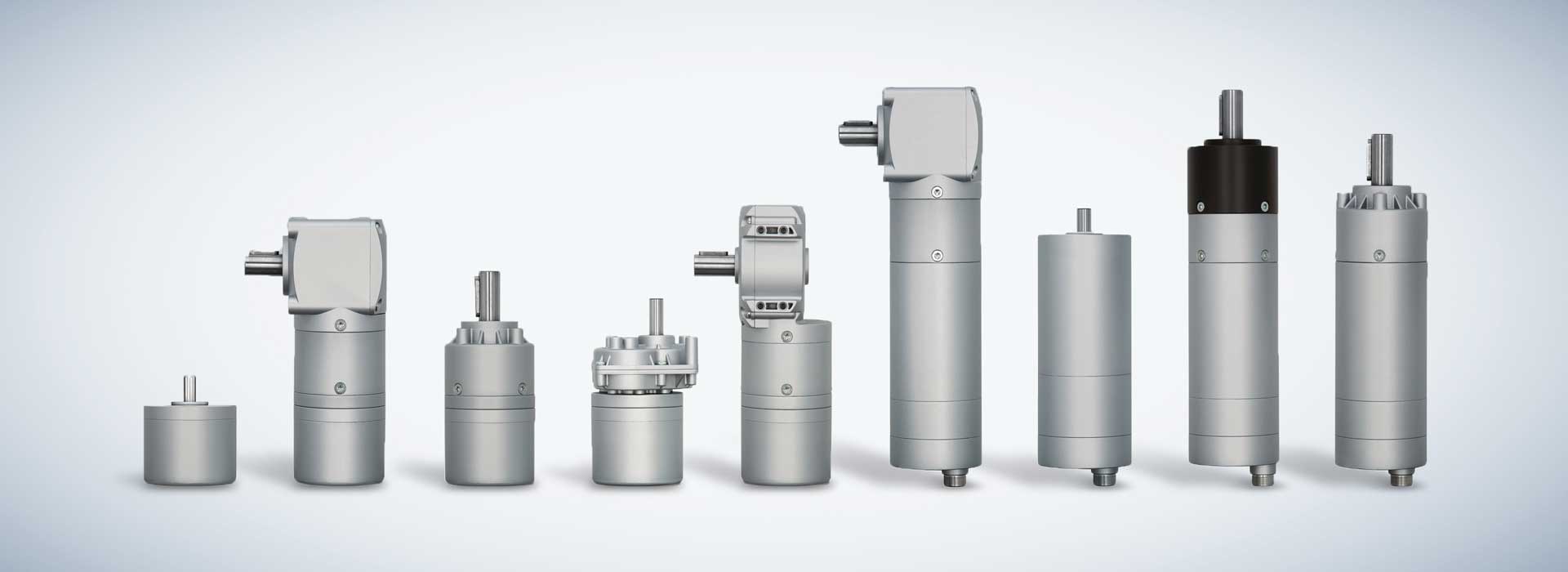In principle, extra-low voltage is defined as the low-voltage range with a maximum of 120 V DC or a maximum of 50 V AC. These values are not entirely harmless to humans and animals, but are not life-threatening. This type of extra-low voltage in the surrounding area can be also appropriate for sensitive devices when ensuring safe operation. It cannot be stated across the board what extra-low voltage is appropriate for electric drives for safety reasons.
The drives designed to industrial standards from ebm-papst St. Georgen, which are used in many automation applications, are usually used with extra-low voltage – DC voltages of 24 or 48 V (Figure 1) to be specific. This does not always mean that the motors have to be operated at precisely these voltages, but rather that transformers in the power supply units and batteries in mobile devices ensure the necessary electrical isolation and safety.

Modular drive system for extra-low-voltage operation
As is usually the case with DC voltages below 60 V, there is generally no need for complex accidental contact protection for the drives, as the extra-low voltages are considered safe in a normal environment. There is no standard definition for safety extra-low voltage, but the aim is for this voltage to be completely safe. Whether it is depends on the application, as an industrial robot or a driverless transport system pose different requirements than a medical device which is used directly on the patient. An operating table (Figure 2) is a good example of this because although there is no risk of life-threatening electric shocks at less than 60 V DC, even the smallest of muscle reflexes caused by electricity could have serious consequences for patients or surgeons. In such cases, the entire safety concept and device design determine the right voltage to be chosen. The extra-low-voltage drives are a very good choice here (Figure 3).
Low voltage, a wide range of advantages
What does this mean for drives from ebm-papst’s modular drive system? At the heart of all possible configurations are electronically commutated internal and external rotor motors in the power range of approx. 10 to 750 W, all of which work with extra-low voltages. In addition to the motors, control electronics with different communications interfaces, different transmission variants, and encoders and brakes are available so that drive solutions can be implemented across all industries.

Contrary to expectations, extra-low voltage does not mean a reduction in performance; the opposite is the case. For example, electrically commutated drive systems, such as in the ArgoDrive driving/steering system, drive driverless transport vehicles (i.e. automated guided vehicles (AGVs), Figure 4) in intralogistics and are high-torque and efficient. Users do not need to make any compromises on performance and can still be sure that the vehicles pose no risk of electric shock.
A typical extra-low-voltage drive from ebm-papst can usually achieve more than 3 times the performance (or even higher) of a comparably powerful low-voltage drive with electronics and sensors, with the same installation space and weight (Figure 5, table). Anyone who values compact design in combination with simple installation and commissioning is therefore in the right place.
Drives for AGVs
Those who can rely on drives with extra-low voltage for their application without any problems, as is the case with AGVs, also benefit in unexpected areas: for example, personnel without special qualifications may carry out commissioning if this is permitted by the safety and risk assessment. Simpler system and factory concepts could be possible for assembly robots, for example. Using extra-low voltage therefore pays off many times over – the right safety extra-low voltage even more so. This also includes applications in which a particularly high level of electrical safety must be guaranteed, such as in operating tables as mentioned above, as even if manufacturers have very demanding requirements here at first glance, the right solution can usually be found.

They are responsible for their device and define the requirements for the drives accordingly. These include compliance with air gaps and creepage distances, insulation concepts, and the use of certain materials that must not be allowed to outgas or burn, for example.
A drive for every application
Thanks to ebm-papst’s decades of experience, a standard solution from the modular drive system with well over 4,000 possible combinations can usually be found in such cases. Due to the extra-low voltage, the cables for the electrical connections can be dimensioned smaller. Compared to low-voltage drives, these motors and electronics are therefore much more compact and can be easily accommodated even in confined installation conditions.
With the test facilities available in-house at ebm-papst, the selected drive solutions are put through their paces and appropriate documentation is produced. Standard drives can also be adapted to user requirements with reasonable effort. A different approach can even help, as perhaps the desired effect can even be achieved with an electrically isolated power supply unit, for example.
ebm-papst in medical technology
Reliable drives and blowers
We develop solutions that work safely and reliably and satisfy the highest standards in medical technology.



Leave a comment